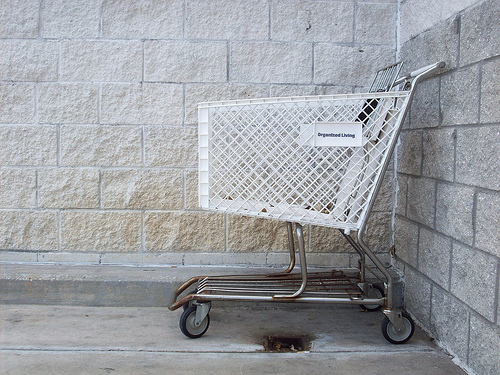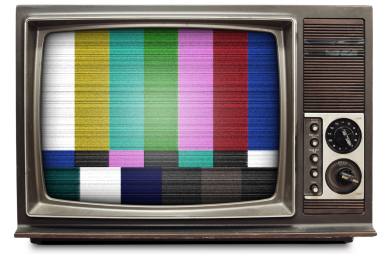 (Photo: Dustin Diaz)
(Photo: Dustin Diaz)
How much more could you get done if you completed all of your required reading in 1/3 or 1/5 the time?
Increasing reading speed is a process of controlling fine motor movement—period.
This post is a condensed overview of principles I taught to
undergraduates at Princeton University in 1998 at a seminar called the
“PX Project”. The below was written several years ago, so it’s worded
like Ivy-Leaguer pompous-ass prose, but the results are substantial. In
fact, while on an airplane in China two weeks ago, I helped
Glenn McElhose increase his reading speed 34% in less than 5 minutes.
I have never seen the method fail. Here’s how it works…
The PX Project
The PX Project, a single 3-hour cognitive experiment, produced an average increase in reading speed of 386%.
It was tested with speakers of five languages, and even dyslexics
were conditioned to read technical material at more than 3,000
words-per-minute (wpm), or 10 pages per minute. One page every 6
seconds. By comparison, the average reading speed in the US is 200-300
wpm (1/2 to 1 page per minute), with the top 1% of the population
reading over 400 wpm…
If you understand several basic principles of the human visual
system, you can eliminate inefficiencies and increase speed while
improving retention.
To perform the exercises in this post and see the results, you will
need: a book of 200+ pages that can lay flat when open, a pen, and a
timer (a stop watch with alarm or kitchen timer is ideal). You should
complete the 20 minutes of exercises in one session.
First, several definitions and distinctions specific to the reading process:
A) Synopsis: You must minimize the number and duration of fixations per line to increase speed.
You do not read in a straight line, but rather in a sequence of
saccadic movements (jumps). Each of these saccades ends with a fixation,
or a temporary snapshot of the text within you focus area (approx. the
size of a quarter at 8? from reading surface). Each fixation will last ¼
to ½ seconds in the untrained subject. To demonstrate this, close one
eye, place a fingertip on top of that eyelid, and then slowly scan a
straight horizontal line with your other eye-you will feel distinct and
separate movements and periods of fixation.
B) Synopsis: You must eliminate regression and back-skipping to increase speed.
The untrained subject engages in regression (conscious rereading) and
back-skipping (subconscious rereading via misplacement of fixation) for
up to 30% of total reading time.
C) Synopsis: You must use conditioning drills to increase horizontal peripheral vision span and the number of words registered per fixation.
Untrained subjects use central focus but not horizontal peripheral
vision span during reading, foregoing up to 50% of their words per
fixation (the number of words that can be perceived and “read” in each
fixation).
The Protocol
You will 1) learn technique, 2) learn to apply techniques with speed
through conditioning, then 3) learn to test yourself with reading for
comprehension.
These are separate, and your adaptation to the sequencing depends on
keeping them separate. Do not worry about comprehension if you are
learning to apply a motor skill with speed, for example. The adaptive
sequence is: technique ‘ technique with speed ‘ comprehensive reading
testing.
As a general rule, you will need to practice technique at 3x the
speed of your ultimate target reading speed. Thus, if you currently read
at 300 wpm and your target reading speed is 900 wpm, you will need to
practice technique at 1,800 words-per-minute, or 6 pages per minute (10
seconds per page).
We will cover two main techniques in this introduction:
1) Trackers and Pacers (to address A and B above)
2) Perceptual Expansion (to address C)
First – Determining Baseline
To determine your current reading speed, take your practice book
(which should lay flat when open on a table) and count the number of
words in 5 lines. Divide this number of words by 5, and you have your
average number of words-per-line.
Example: 62 words/5 lines = 12.4, which you round to 12 words-per-line
Next, count the number of text lines on 5 pages and divide by 5 to
arrive at the average number of lines per page. Multiply this by average
number of words-per-line, and you have your average number of words per
page.
Example: 154 lines/5 pages = 30.8, rounded to 31 lines per page x 12 words-per-line = 372 words per page
Mark your first line and read with a timer for 1 minute exactly-do
not read faster than normal, and read for comprehension. After exactly
one minute, multiply the number of lines by your average words-per-line
to determine your current words-per-minute (wpm) rate.
Second – Trackers and Pacers
Regression, back-skipping, and the duration of fixations can be
minimized by using a tracker and pacer. To illustrate the importance of a
tracker-did you use a pen or finger when counting the number of words
or lines in above baseline calculations? If you did, it was for the
purpose of tracking-using a visual aid to guide fixation efficiency and
accuracy. Nowhere is this more relevant than in conditioning reading
speed by eliminating such inefficiencies.
For the purposes of this article, we will use a pen. Holding the pen
in your dominant hand, you will underline each line (with the cap on),
keeping your eye fixation above the tip of the pen. This will not only
serve as a tracker, but it will also serve as a pacer for maintaining
consistent speed and decreasing fixation duration. You may hold it as
you would when writing, but it is recommended that you hold it under
your hand, flat against the page.
1) Technique (2 minutes):
Practice using the pen as a tracker and pacer. Underline each line,
focusing above the tip of the pen. DO NOT CONCERN YOURSELF WITH
COMPREHENSION. Keep each line to a maximum of 1 second, and increase the
speed with each subsequent page. Read, but under no circumstances
should you take longer than 1 second per line.
2) Speed (3 minutes):
Repeat the technique, keeping each line to no more than ½ second (2
lines for a single “one-one-thousand”). Some will comprehend nothing,
which is to be expected. Maintain speed and technique-you are
conditioning your perceptual reflexes, and this is a speed exercise
designed to facilitate adaptations in your system. Do not decrease
speed. ½ second per line for 3 minutes; focus above the pen and
concentrate on technique with speed. Focus on the exercise, and do not
daydream.
Third – Perceptual Expansion
If you focus on the center of your computer screen (focus relating to
the focal area of the fovea in within the eye), you can still perceive
and register the sides of the screen. Training peripheral vision to
register more effectively can increase reading speed over 300%.
Untrained readers use up to ½ of their peripheral field on margins by
moving from 1st word to last, spending 25-50% of their time “reading”
margins with no content.
To illustrate, let us take the hypothetical one line: “Once upon a
time, students enjoyed reading four hours a day.” If you were able to
begin your reading at “time” and finish the line at “four”, you would
eliminate 6 of 11 words, more than doubling your reading speed. This
concept is easy to implement and combine with the tracking and pacing
you’ve already practiced.
1) Technique (1 minute):
Use the pen to track and pace at a consistent speed of one line per
second. Begin 1 word in from the first word of each line, and end 1 word
in from the last word.
DO NOT CONCERN YOURSELF WITH COMPREHENSION. Keep each line to a
maximum of 1 second, and increase the speed with each subsequent page.
Read, but under no circumstances should you take longer than 1 second
per line.
2) Technique (1 minute):
Use the pen to track and pace at a consistent speed of one line per
second. Begin 2 words in from the first word of each line, and end 2
words in from the last word.
3) Speed (3 minutes):
Begin at least 3 words in from the first word of each line, and end 3
words in from the last word. Repeat the technique, keeping each line to
no more than ½ second (2 lines for a single “one-one-thousand”).
Some will comprehend nothing, which is to be expected. Maintain speed
and technique-you are conditioning your perceptual reflexes, and this
is a speed exercise designed to facilitate adaptations in your system.
Do not decrease speed. ½ second per line for 3 minutes; focus above the
pen and concentrate on technique with speed. Focus on the exercise, and
do not daydream.
Fourth – Calculate New WPM Reading Speed
Mark your first line and read with a timer for 1 minute exactly- Read
at your fastest comprehension rate. Multiply the number of lines by
your previously determined average words-per-line to get determine your
new words-per-minute (wpm) rate.
Congratulations on completing your cursory overview of some of the
techniques that can be used to accelerate human cognition (defined as
the processing and use of information).
Final recommendations: If used for study, it is
recommended that you not read 3 assignments in the time it would take
you to read one, but rather, read the same assignment 3 times for
exposure and recall improvement, depending on relevancy to testing.
Happy trails, page blazers.
###
















